Corfu: The Garden of the Gods
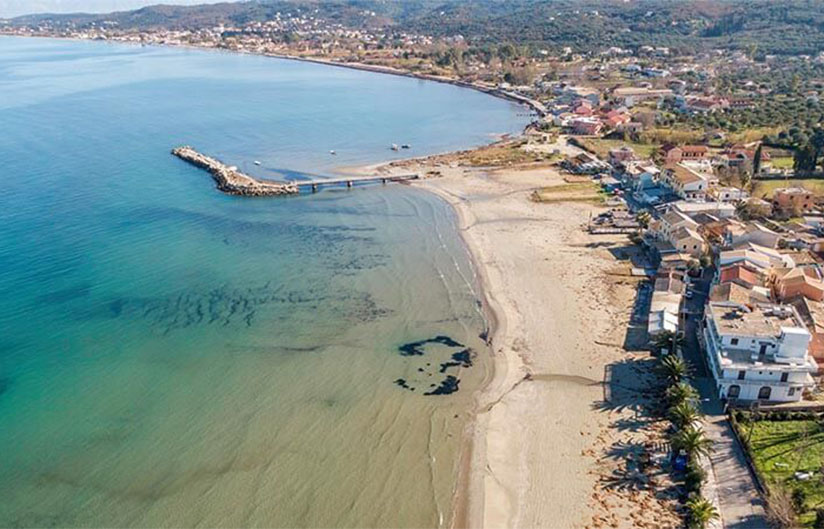
Roda is a medium-small beach resort known for its generous sandy beach and good range of amenities. The resort itself is walkable, low-rise and flat. It’s a former fishing village and there’s a small harbour with a few working vessels.Unlike neighbours Kassiopi and Sidari, Roda isn’t really on the day-trip circuit so the beach doesn’t get too crowded. It’s quiet and family-friendly but has a good range of amenities and gets lively enough in the evening with Greek nights, karaoke, quizzes, and live music. Roda is popular with package tourists, returnees, expats and regulars. The crowd is mainly young families and older couples looking for a good-value beach break. There are plenty of beachside tavernas and cafes, and a few backstreets with tourist shops and travel agencies.
The village, which was built in the 14th century while the island was under Byzantine rule, is located on the northern flanks of Mount Pantokrator at about 400m above sea level. The surrounding land was ideal both for sheep farming and the cultivation of olives and vines, and Old Perithia was soon relatively prosperous.
Old Perithia is no ghost town, however, thanks to the presence of a bed and breakfast and a handful of tavernas serving excellent mountain fare. Apart from good food, the village offers visitors a fascinating insight into Corfu’s history, jaw-dropping views, and an ideal “base camp” for anyone wishing to hike up to the summit of Mount Pantokrator, which takes about an hour.

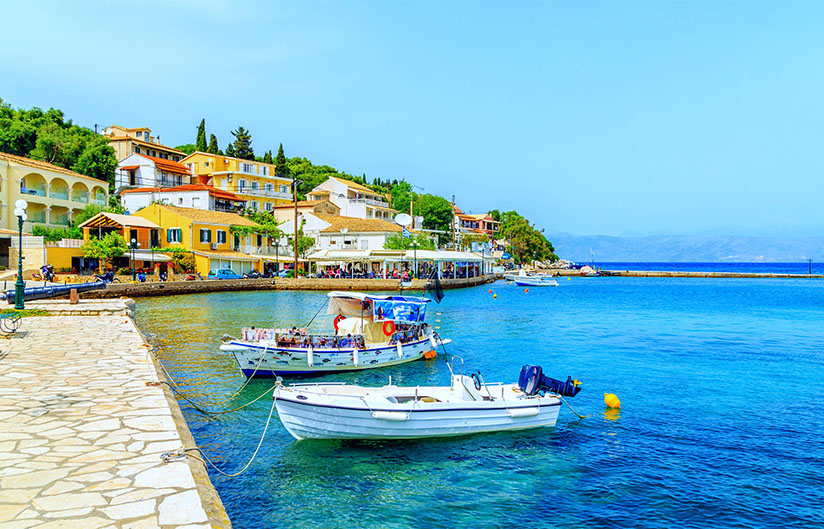
Kassiopi is one of the most popular tourist destinations in northern Corfu. Unlike the north coast’s beach-focused resorts, Kassiopi is a bustling small town set around a scenic harbour and overlooked by the remains of a Byzantine castle. Kassiopi is an old fishing village which has retained its charm. Although most of the buildings are new it has been developed sympathetically to Corfu’s traditional Ionian architecture. It’s particularly pretty at night with the lights surrounding the horshoe-shaped harbour reflecting in the water. Kassiopi is popular with internationals, particularly a mature and cosmopolitan British crowd who favour its atmosphere, facilities, and good-quality restaurants over direct beach access.
Love beckons at Sidari, where if you swim in the Canal d’Amour, the myth says you’ll find your soul mate. This natural ‘tunnel’ in the sandstone rocks is just one of the sandstone formations found around the spectacular sand beaches around the town.

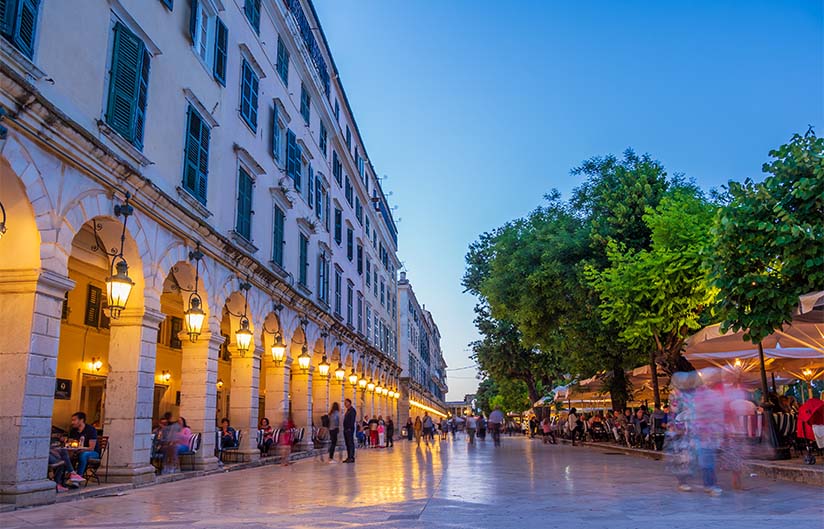
A UNESCO world heritage site, Corfu’s historic centre with its neoclassical influences will dazzle you. Check out the Palace of St Michael and St Georgiou, the Liston Arcade, the Reading Society and the Kapodistrias family mansion to name but a few. Whilst walking the famous alleyways of Campiello, with clotheslines hanging above you, and visiting the opulent hotels are also a ‘must’ for every visitor.
On the eastern side of Corfu town, the rocky shore crowned by two low peaks gives the island its name Koryfo – Corfu (meaning peak). The Old Fort (Palaio Frourio), built in the 13th century has much to offer including the British-built church of St George resembling a Doric temple. This open-air museum offers a journey through time. Towering above the northwest border of the capital, the other guardian, the 16th century Neo Frourio (New Fort), is a masterpiece of military architecture built by the Venetians.
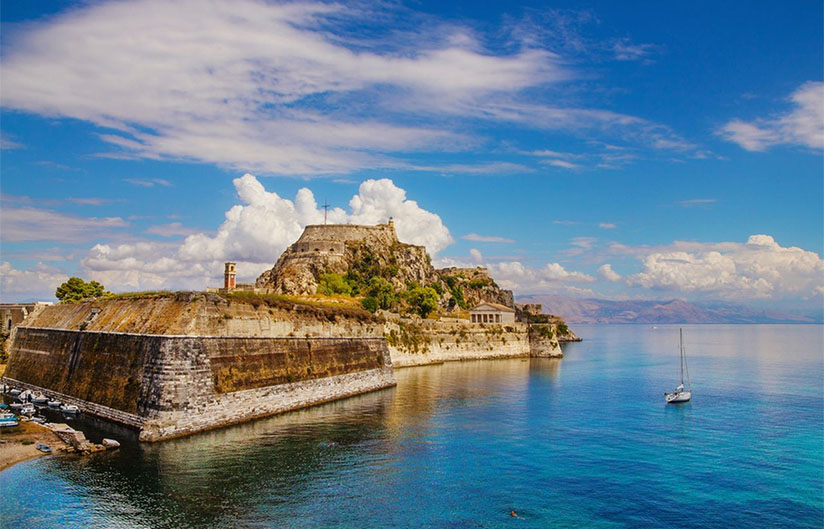
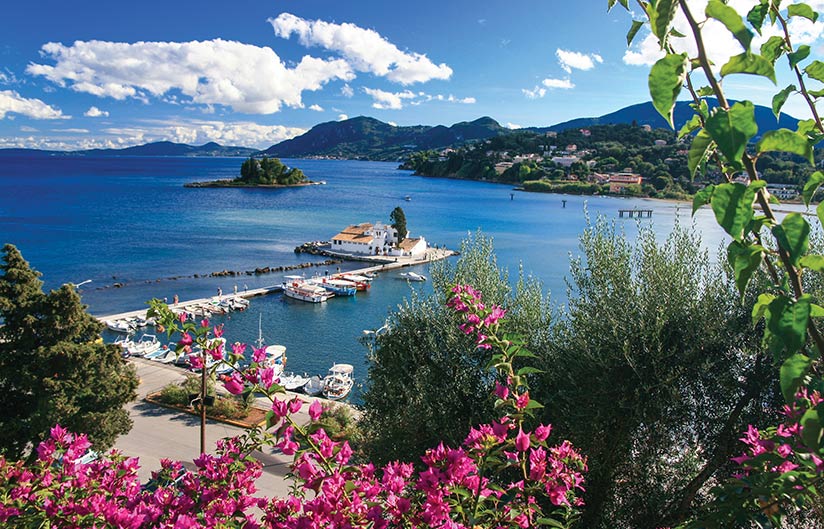
The two famous landmarks of Corfu island are actually other islands: the diminutive Pontikonisi, which translates as Mouse Island, is just large enough to hold the Pantokrator monastery. Sitting right next to it, the famous islet Vlacherna, with its 17th century monastery dedicated to the Virgin Mary, is connected to the mainland by a narrow causeway.
The Island’s imperial past is one of the reasons it enjoys the reputation as one the most glamorous and luxurious destinations in Greece.
Empress Elizabeth of Austria-Hungary, the legendary Sissi, chose Corfu to build her palace. This elegant Pompeian-style building with luxurious, neoclassical living rooms has beautiful gardens where you can see the famous statue of Dying Achilles.
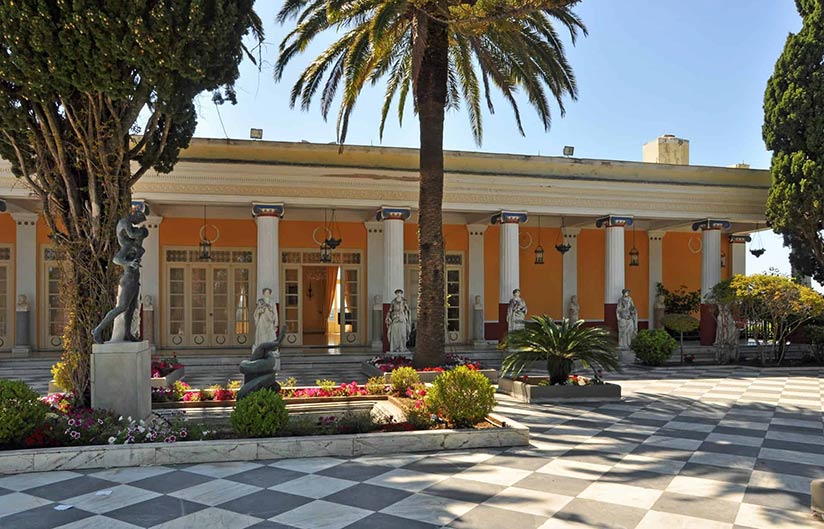
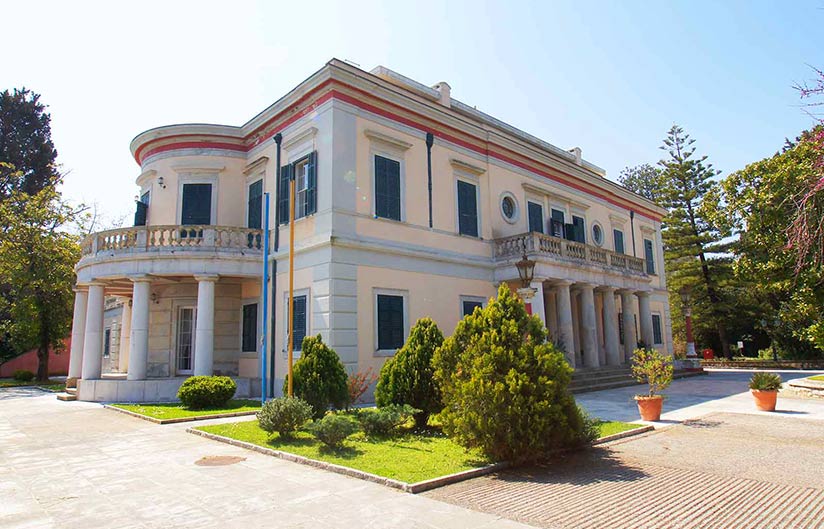
British High Commissioner Frederick Adam built this summer residence for his wife, Nina Palatianou in the early 19th century.
Situated in beautiful forested surroundings, it occupies the site of ancient Corcyra, as the city was then called.
The villa houses the Palaiopolis museum and botanical gardens with more than 2,000 rare plants collected from across the British Empire.

